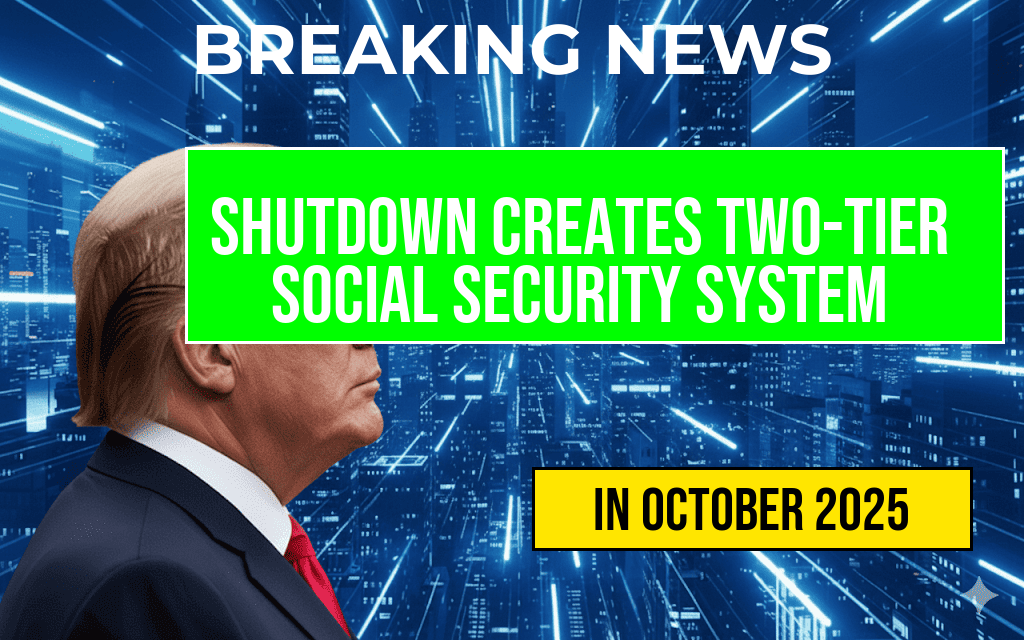The ongoing government shutdown has introduced a stark division within the Social Security program, creating a two-tier system that impacts current and future beneficiaries differently. While existing Social Security recipients are shielded from immediate disruptions, new applicants face a complete halt in processing their claims. This division underscores the broader financial and administrative challenges posed by the shutdown, raising concerns about the sustainability and fairness of the system. As federal agencies operate under limited funding, the implications for millions relying on Social Security benefits have become increasingly urgent, prompting questions about the long-term effects on the nation’s social safety net.
Impact on Existing Social Security Recipients
For millions of Americans already receiving Social Security benefits, the shutdown has not resulted in immediate disruptions. The Social Security Administration (SSA) has confirmed that monthly payments will continue to be disbursed as scheduled, thanks to automatic funding mechanisms and reserve funds. This means that retirees, disabled individuals, and survivors relying on monthly benefits are largely protected from the operational impacts of the shutdown. However, representatives within the SSA have warned that this stability is not guaranteed indefinitely, especially if the shutdown persists beyond a few weeks.
“Our systems are designed to prioritize the delivery of benefits to current recipients,” explained a senior SSA official. “While we are committed to ensuring payments go out without interruption, our capacity to process new claims and handle inquiries is severely limited.”
New Applications and Claims Put on Hold
Conversely, individuals seeking new Social Security benefits are facing unprecedented delays. The shutdown has effectively frozen the processing of new applications for retirement, disability, and survivor benefits. Many local SSA offices are closed or operating with skeletal staff, and the agency’s online portals are limited in functionality. This situation leaves thousands of prospective beneficiaries in limbo, unable to access the support they need during critical periods.
“People are unable to submit new claims or receive updates on their applications,” said Emily Carter, a social policy analyst. “This creates a backlog that could take months to clear once operations resume, potentially leaving vulnerable populations without essential income.”
Administrative Challenges and Future Concerns
The two-tier system accentuates existing vulnerabilities within the Social Security framework. While current beneficiaries are shielded temporarily, the inability to process new claims threatens future stability. This gap could lead to significant financial hardship for individuals awaiting benefits, especially those approaching retirement or facing urgent disability needs.
| Aspect | Existing Beneficiaries | New Applicants |
|---|---|---|
| Benefit Payments | Continued without interruption | Not affected; application processing halted |
| Application Processing | Not applicable | Paused or severely delayed |
| Customer Service Access | Limited, with some online resources available | Significantly restricted |
Political and Policy Repercussions
The division within the Social Security system exposes broader political debates about funding and governance. Lawmakers have been unable to reach consensus on measures to sustain or reform the program amid the shutdown, highlighting the vulnerability of social safety nets to partisan impasses. Advocates argue that the current situation underscores the need for a more resilient funding structure that can withstand political disruptions.
“The shutdown reveals a fundamental flaw in how we manage essential services,” stated Senator Mark Johnson, a member of the Senate Finance Committee. “We must prioritize bipartisan solutions to ensure that vital programs like Social Security are protected from these kinds of crises in the future.”
Looking Ahead: Recovery and Reforms
As negotiations continue on Capitol Hill, experts warn that the impacts of the shutdown could linger well beyond its resolution. The backlog of pending claims could strain the SSA’s resources once funding is restored, delaying benefits for new applicants and potentially affecting the trust in the program.
For now, current recipients can breathe a measure of relief, but the broader implications highlight an urgent need for policy reforms that fortify Social Security against political disruptions. Stakeholders advocate for increased funding, modernization of processing systems, and legislative safeguards that ensure continuity regardless of government funding debates.
To understand more about Social Security’s structure and recent challenges, visit Wikipedia’s article on the SSA or review recent policy analyses at Forbes.
Frequently Asked Questions
Question
How does the government shutdown affect existing Social Security recipients?
Question
Will new applicants for Social Security be able to receive benefits during the shutdown?
Question
What is the two-tier system created by the government shutdown for Social Security?
Question
Are Social Security payments to existing recipients impacted by the shutdown?
Question
What are the implications for future Social Security applicants due to the government shutdown?

Leave a Reply